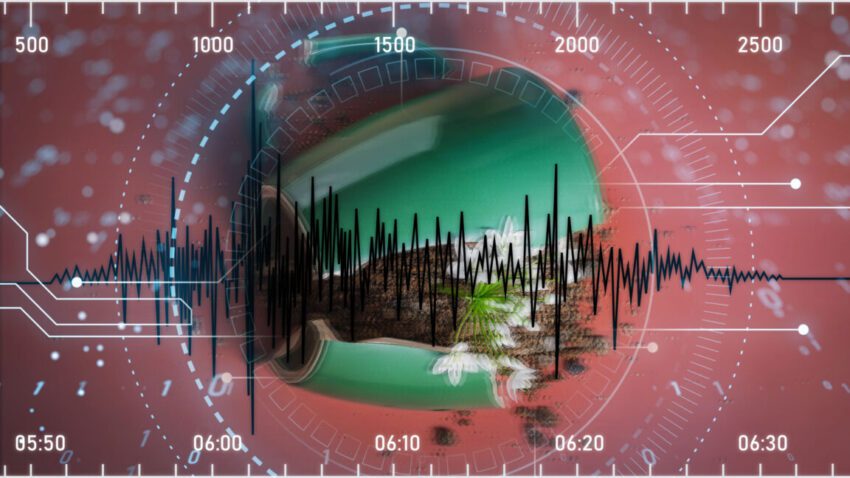
like putting on glasses for the first Recent advancements in artificial intelligence (AI) are revolutionizing the field of seismology, enabling the detection of even the smallest earthquakes with unprecedented accuracy.
like putting on glasses for the first
The Significance of Small Earthquakes
On January 1, 2008, at 1:59 am, a minor earthquake registered a magnitude of -0.53 in Calipatria, California. This seismic event was so subtle that even residents in the vicinity were unaware of it. The tremor’s intensity was comparable to the vibrations caused by a passing truck, rendering it virtually undetectable by human senses. However, this earthquake is noteworthy not for its size but for the implications of its detection. It exemplifies how advancements in technology, particularly AI, are transforming our understanding of seismic activity.
Traditionally, seismologists relied on human analysts and basic computer programs to identify and analyze earthquakes. This process was not only time-consuming but also limited in its ability to detect smaller seismic events, especially in urban environments where background noise can obscure subtle tremors. The ability to identify these minor earthquakes is crucial, as they provide valuable insights into the Earth’s composition and potential hazards that may arise in the future.
AI’s Role in Earthquake Detection
Over the past seven years, machine-learning tools have emerged as a game-changer in the field of seismology. These AI-driven systems have automated the fundamental task of earthquake detection, significantly enhancing the speed and accuracy of identifying seismic events. By leveraging advanced algorithms and vast datasets, AI can analyze seismic waves more effectively than human analysts.
How Machine Learning Works in Seismology
Machine learning, a subset of AI, involves training algorithms to recognize patterns within large datasets. In the context of earthquake detection, these algorithms are fed extensive historical data on seismic activity, allowing them to learn the characteristics of different types of earthquakes. Once trained, the AI can quickly analyze incoming seismic data in real time, identifying potential earthquakes with remarkable precision.
This capability is particularly beneficial in urban areas, where the noise generated by human activity can mask the signals of smaller earthquakes. Traditional methods often struggle to differentiate between seismic noise and actual tremors, leading to missed detections. However, AI’s ability to process and analyze data at a scale and speed far beyond human capability allows it to identify even the faintest seismic signals.
Benefits of AI in Seismology
The integration of AI into earthquake detection systems offers several significant advantages:
- Increased Detection Sensitivity: AI tools can detect smaller earthquakes that would typically go unnoticed by human analysts, thereby providing a more comprehensive understanding of seismic activity.
- Real-Time Analysis: Machine learning algorithms can process seismic data in real time, enabling quicker responses to seismic events and enhancing public safety.
- Reduced Human Error: By automating the detection process, AI minimizes the potential for human error, leading to more reliable data and analyses.
- Cost Efficiency: Automating earthquake detection reduces the need for extensive human resources, allowing for more efficient allocation of funding and personnel in seismology.
Implications for Seismology and Public Safety
The implications of improved earthquake detection through AI extend beyond academic interest; they have tangible benefits for public safety and disaster preparedness. Understanding seismic activity, even at a minor level, can inform building codes, urban planning, and emergency response strategies.
Enhancing Earthquake Preparedness
By detecting smaller earthquakes, researchers can gain insights into fault lines and seismic patterns that may indicate larger, more destructive earthquakes in the future. This knowledge can be invaluable for cities located in seismically active regions, allowing them to implement more effective preparedness measures. For instance, data gathered from minor earthquakes can help identify areas at higher risk of significant seismic events, prompting local governments to enhance building codes and emergency response plans.
Research and Development Opportunities
The ability to detect smaller earthquakes also opens avenues for further research in seismology. Scientists can study the relationships between minor seismic events and larger earthquakes, potentially leading to breakthroughs in predicting seismic activity. Understanding these relationships could ultimately save lives and reduce property damage during significant earthquakes.
Challenges and Limitations of AI in Seismology
Despite the numerous advantages of AI in earthquake detection, challenges remain. One significant concern is the quality and availability of data used to train machine-learning algorithms. The effectiveness of AI tools is directly linked to the quality of the datasets they are trained on. In regions where seismic data is sparse or inconsistent, the performance of AI systems may be compromised.
Data Quality and Accessibility
For AI to function optimally, it requires high-quality, well-labeled data. In many parts of the world, especially in developing regions, seismic monitoring infrastructure may be lacking. This limitation can hinder the deployment of AI-driven earthquake detection systems, as the algorithms may not have enough data to learn from. Additionally, ensuring that data is accessible to researchers and practitioners is essential for fostering collaboration and innovation in the field.
Ethical Considerations
As with any technology, the use of AI in seismology raises ethical considerations. The automation of earthquake detection could lead to over-reliance on technology, potentially diminishing the role of human expertise in interpreting seismic data. While AI can enhance detection capabilities, human oversight remains crucial for contextualizing data and making informed decisions based on the findings.
Stakeholder Reactions
The integration of AI in earthquake detection has garnered attention from various stakeholders, including researchers, government agencies, and the general public. Many scientists express optimism about the potential of AI to revolutionize seismology, emphasizing the importance of continued research and collaboration in this area.
Academic and Research Community
Members of the academic community have lauded the advancements in AI-driven earthquake detection, highlighting the potential for improved data collection and analysis. Researchers are eager to explore the implications of these technologies for understanding seismic activity and enhancing public safety. Collaborative efforts between universities, research institutions, and technology companies are essential for advancing the field further.
Government Agencies
Government agencies responsible for disaster preparedness and response are also taking notice of AI’s capabilities. Many are investing in research and development to integrate AI technologies into existing seismic monitoring systems. By doing so, they aim to enhance their ability to respond to earthquakes and improve public safety measures.
Public Awareness and Education
As AI becomes more prevalent in earthquake detection, public awareness and education will be critical. Communities in seismically active regions must understand the benefits and limitations of AI technologies. Educating the public about the importance of earthquake preparedness and the role of AI in enhancing detection can foster a culture of safety and resilience.
The Future of Earthquake Detection
The future of earthquake detection is poised for significant transformation as AI technologies continue to evolve. Ongoing research and development will likely yield even more sophisticated algorithms capable of analyzing seismic data with greater accuracy and speed. As these technologies become more refined, the potential for predicting seismic events may also improve, offering hope for enhanced disaster preparedness and response.
In conclusion, the integration of AI into earthquake detection represents a pivotal advancement in seismology. By automating the detection of even the smallest earthquakes, AI tools are reshaping our understanding of seismic activity and enhancing public safety. While challenges remain, the potential benefits of AI in this field are substantial, paving the way for a safer and more informed future.
Source: Original report
Was this helpful?
Last Modified: October 10, 2025 at 6:37 pm
0 views















